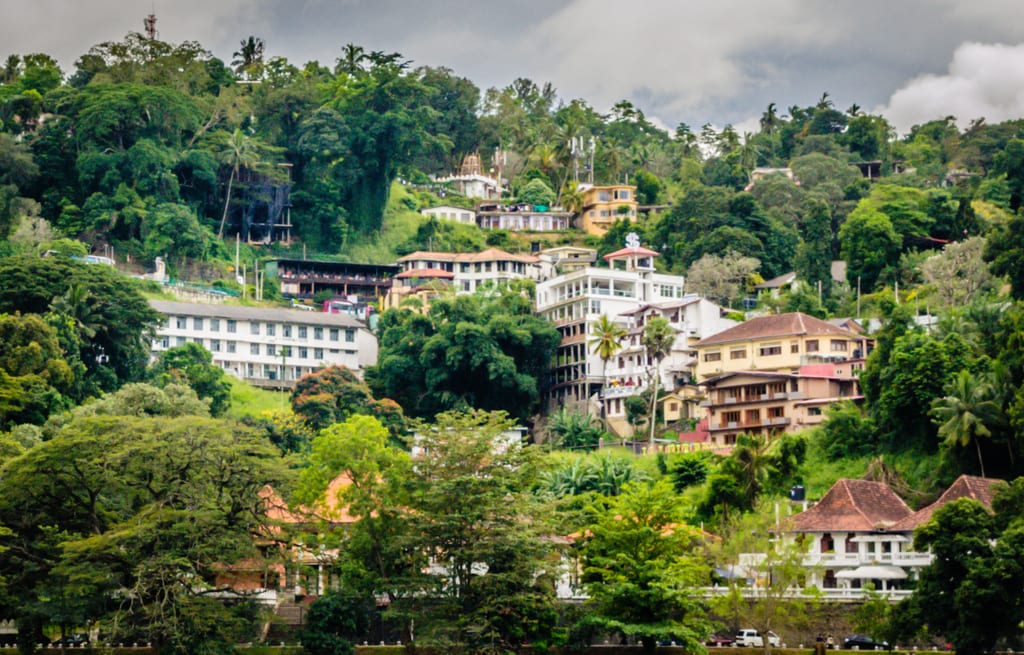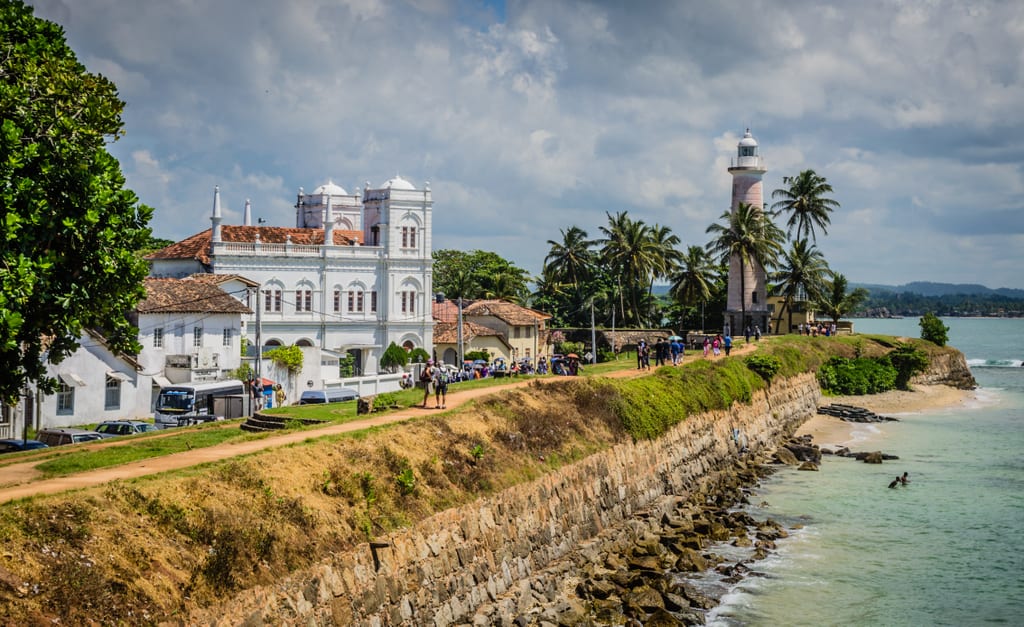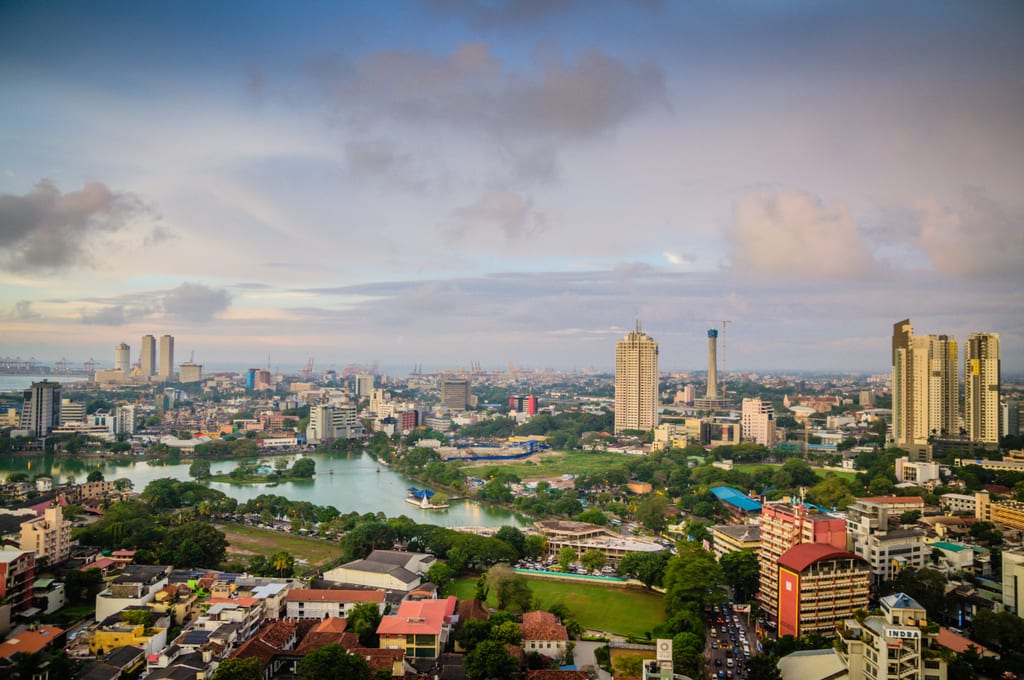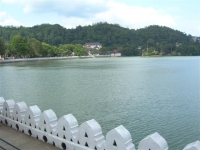Waterfalls of Sri Lanka
Beautiful waterfalls cascading down the mountain slopes enhance the beauty of the hill country. The geographical formation of the Island with the central highland sloping down to the coastal plains has resulted in several rivers and streams starting from the central region flowing down the hilly slopes in a radial pattern, creating beautiful waterfalls in several places in the hill country.
Bambarakanda Fall
Bambarakanda Falls is the tallest waterfall in Sri Lanka. With a height of 263 m (863 ft), it ranks as the 299th highest waterfall in the world. It is located in Kalupahana in the Badulla District. The waterfall was formed by Kuda Oya, which is a branch of the Walawe River. The Bambarakanda Falls can be found in a forest of pine trees.
Dunhinda Fall
Dunhinda Falls is a waterfall located about 5 kilometres (3.1 mi) away from Badulla town. The Dunhinda Falls is one of Sri Lanka's most beautiful waterfalls. The waterfall, which is 210 feet (64 m) high gets its name from the smoky dew drops spray, (Dun in sinhala means mist or smoke) which surrounds the area at the foot of the waterfall. The water fall is created by the river called Badulu Oya which goes through the Badulla town.
Bopath Ella Fall
Bopath Ella is a waterfall situated in the Ratnapura District of Sri Lanka. It has a shape very similar to the leaf of the sacred fig or "Bo" tree, which has earned it this name. The waterfall is a major tourist attraction in the country. Local myths say that it is haunted and that it hides a treasure trove. The name "Bopath Ella" has been given to the waterfall because of its shape. The water flows through a narrow gap in the rocks and then widens, forming the shape of a leaf of a "Bo" tree which is the Sinhalese name for sacred fig. "Path" means leaves of a tree and "Ella" means waterfall.
St. Clair's Fall
St. Clair's fall is one the widest waterfalls in Sri Lanka. St. Clair's fall is called the "Little Niagara of Sri Lanka” and it is one of the most politically discussed environmental entities in Sri Lanka. It is situated 3 km west of the town of Talawakele on the Hatton-Talawakele Highway in Nuwara Eliya District. The falls derived its name from a nearby tea estate. The fall is 80m high and hence 20th highest waterfall in Sri Lanka. St. Clair's falls comprises two falls called "Maha Ella" (Sinhalese "The Greater Fall") and "Kuda Ella," (Sinhalese "The Lesser Fall") which is 50m high and was created by a tributary of Kotmale Oya.
Laxapana Fall
Laxapana Falls is 126m high and the 8th highest waterfall in Sri Lanka and 625th highest waterfall in the world. It is situated in Hatton area in Nuwara Eliya District. It formed by Maskeliya Oya near the confluence of Kehelgamuwa Oya and Maskeliya Oya which forms Kelani River. The Falls gives its name to twin Hydro electricity Power stations, Laxapana which generates 50MW of electricity and New Laxapana which generates 100MW. Popular folklore says this place where Buddha mended his saffron robe when he was visiting Sri Pada. The name of the Falls derived from Sinhala words of "Laxa" means Hundred thousand and "Pahana" or "Pashana" means rock.
Baker's Fall
Baker's fall is a famous waterfall in Sri Lanka. It is situated in Horton Plains National Park on a tributary of the Belihul Oya. The height of the Baker's waterfalls is 20 metres (66 ft). The falls were named after Sir Samuel Baker, who was a famous explorer. Many Rhododendron and Fern bushes can be seen around the waterfall.
Diyaluma water fall
Diyaluma water fall is 220m high and the second highest waterfall in Sri Lanka and 361st highest waterfall in the world. It is situated 6 km away from Koslanda in Badulla District off on Colombo-Badulla highway. The water fall is formed by Punagala Oya, a tributary of Kuda Oya which in turn, is a tributary of Kirindi Oya. In Sinhalese, Diyaluma or Diya Haluma means "rapid flow of water". According to Dr.R.L. Brohier, the famous historian, Diyaluma is the setting of the folklore about a tragedy involving a young King and a young woman of a low-caste.



















.jpg)
.jpg)
.jpg)
.jpg)

.JPG)
.jpg)
.jpg)
.jpg)
.jpg)







